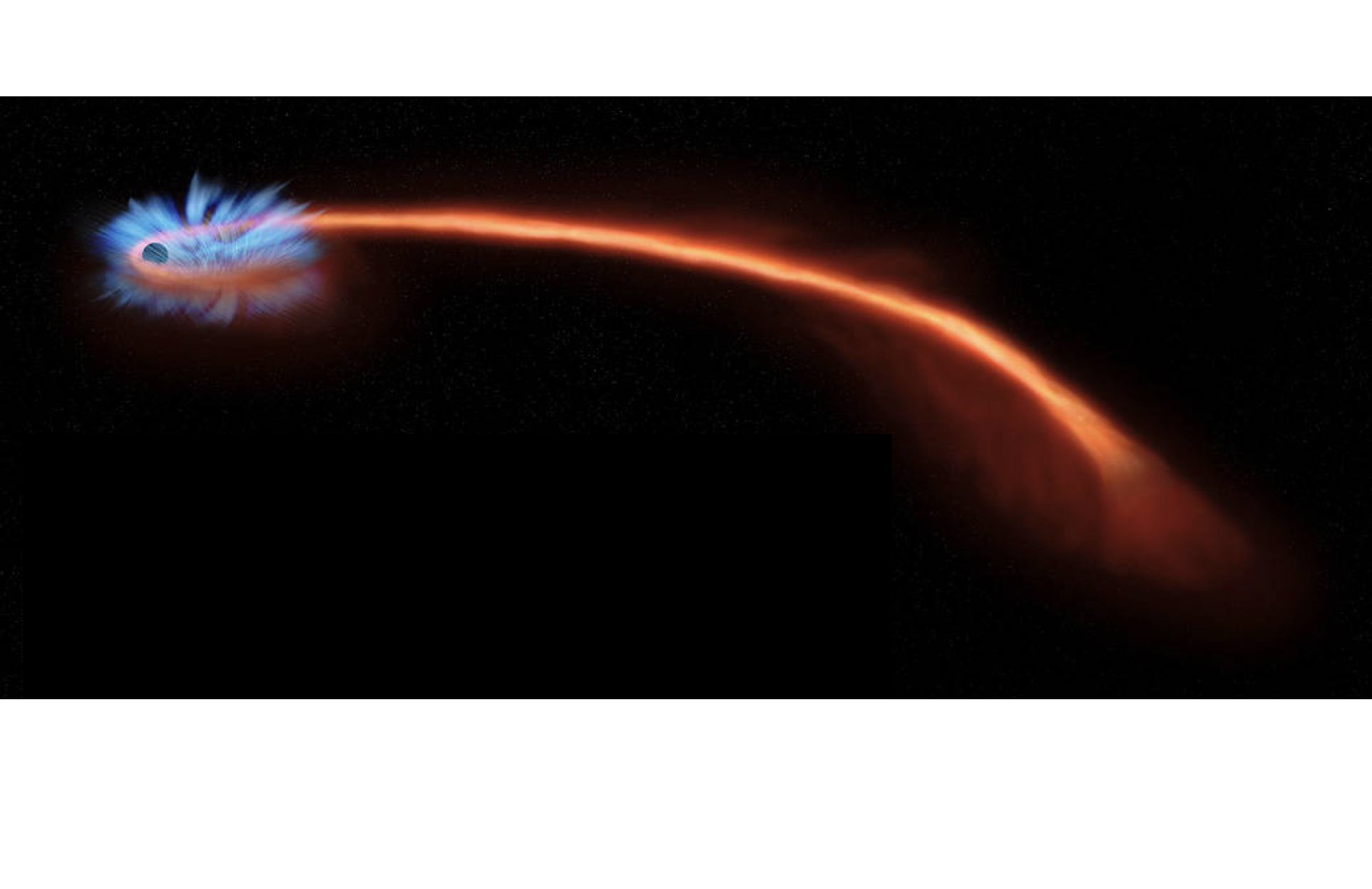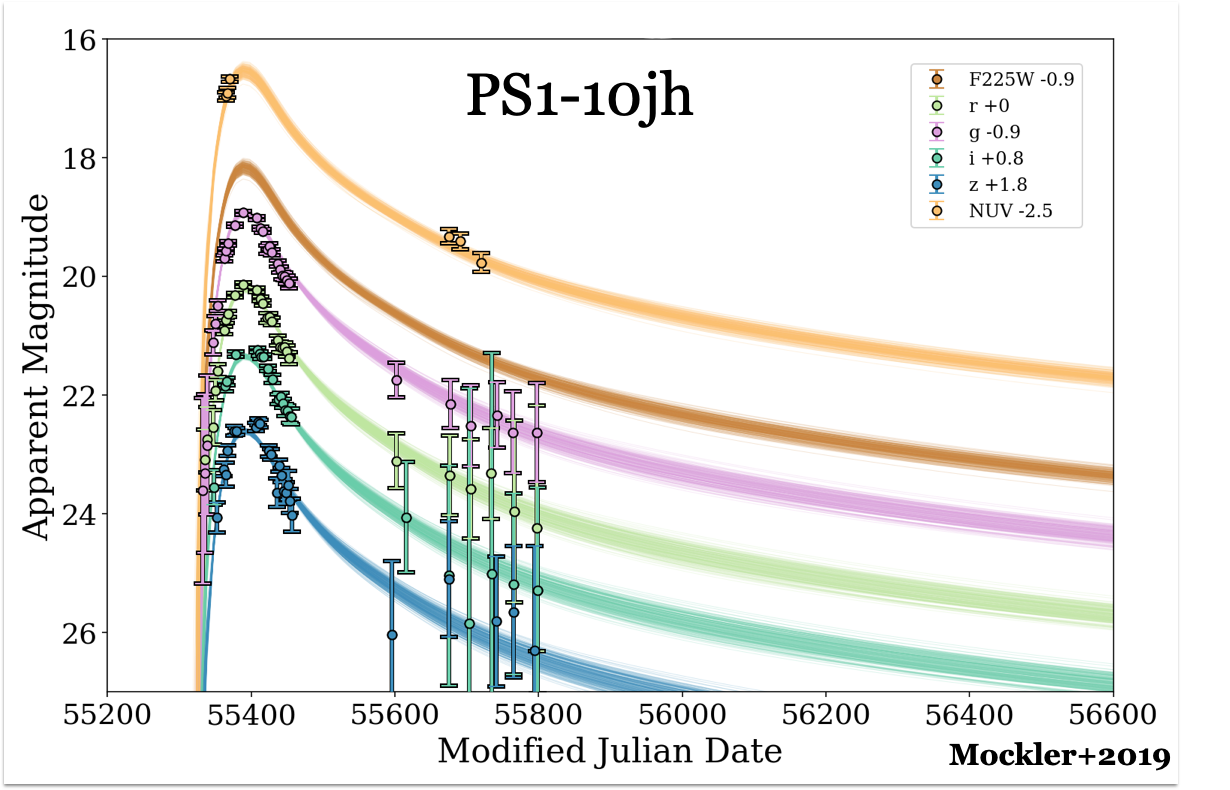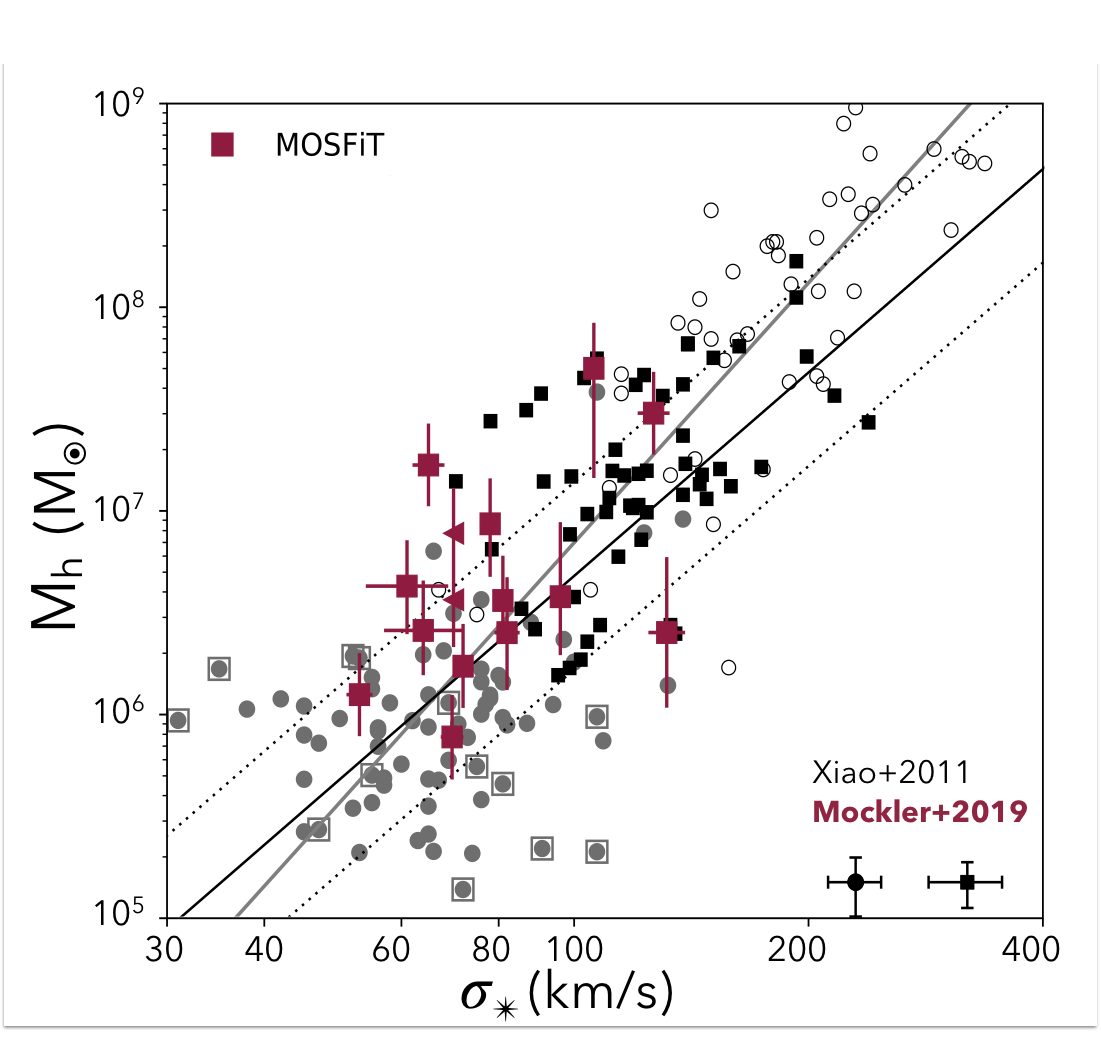Research
My research is centered on using tidal disruption events to understand the properties and evolution of SMBHs and the environments that surround them.
Tidal Disruption Events
When stars wander too close to a black hole they can get torn apart by the black hole's tidal gravity, lighting up the sky in spectacles that look similar to supernovae.

image source: NASA
Here's a public talk of mine that provides background on TDEs and black holes:
Connecting theory to observations

Through fitting TDE light curves we can learn a lot about these processes. For example, we can estimate the mass of the disrupting black holes, study the accretion processes that feed black holes, and learn about stellar populations in the nuclear regions of galaxies.
Here is the M-sigma relation for low-mass galaxies from Xiao+2011. I've added black hole masses for TDE host galaxies calculated using MOSFiT. They are consistent with the M-sigma relation -- showing how TDEs can provide us with a unique way to measure black hole masses.
